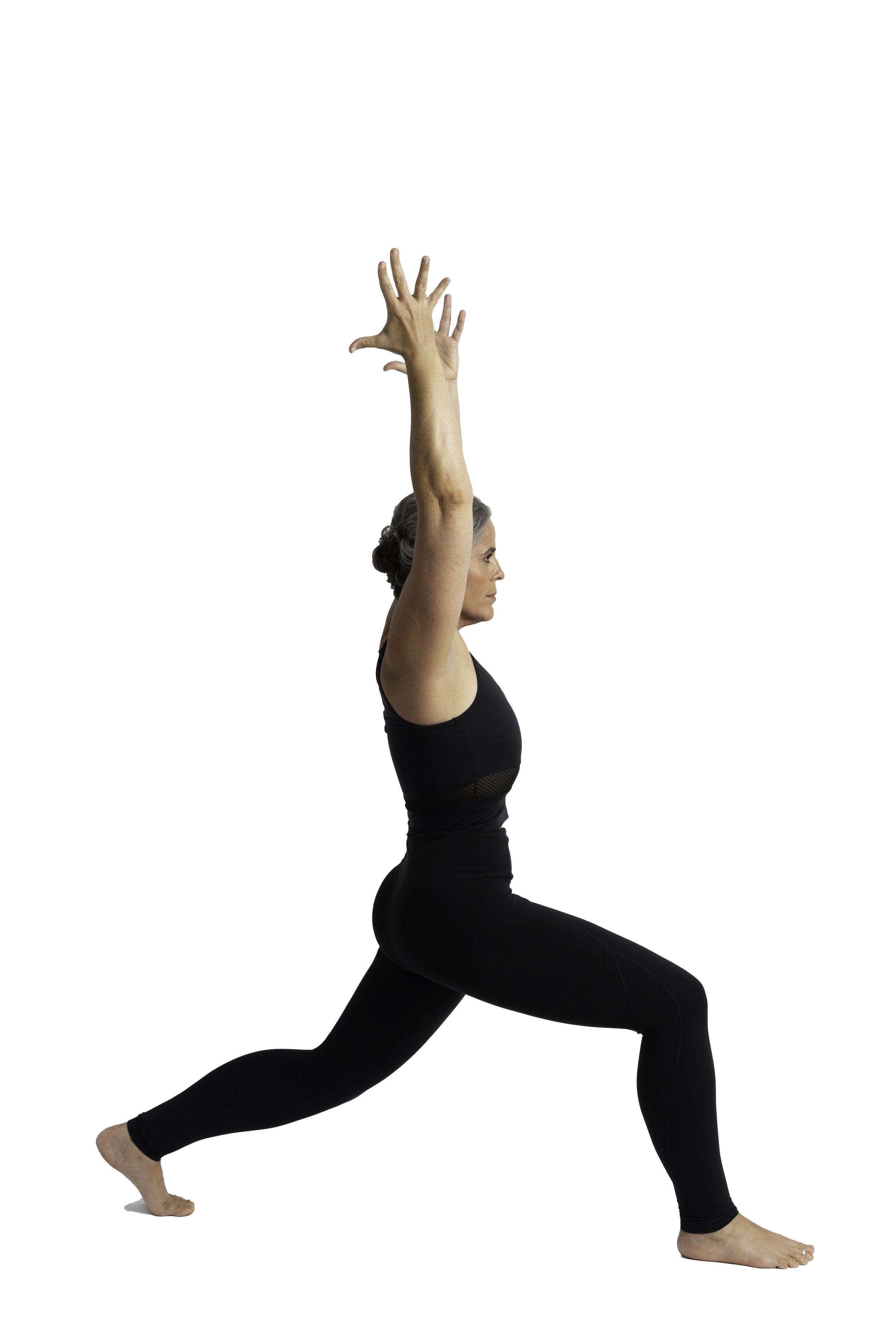Warrior I or High Lunge?
It's interesting to watch the trends in the yoga world evolve with posture alignment. Certain postures or cues have become demonized while others have become glorified. As we all become more intelligent about anatomy, body diversity, and injury, I think that it is important that we don't get tunnel visioned by making things absolutely wrong or right. Every single body and experience is unique. As I see it, certain cues aren't necessarily wrong; rather, they just aren't always relevant. When my students or teachers are investigating whether something is "wrong" or "right" with yoga posture, I suggest that they ask the question, "what is it for?" Are you aiming to look a certain way in the pose? Or are you looking for the most functionally balanced posture? What is it that you are attempting to do? These questions will always help you with any investigation around alignment.
Warrior I pose: back heel anchored down / asymmetrical pelvis
Warrior I has the reputation of presenting some biomechanical issues because it can create asymmetry in the pelvis. The forward leg encourages the pelvis to action forward while the back leg creates an anchoring back. Holding the body in asymmetry is not the problem, it is the forceful attempt to aim the hips forward that can cause degradation. This uneven leveraging force can land in the sacroiliac joints and/or lumbar spine if overdone.
In Warrior I it is crucial to allow freedom in foot placement and not to be adamant about squaring the hips forward.
Forcing the hips to square forward with an anchored back heel will exaggerate the torque pressure across the pelvic bones, specifically the sacroiliac joints. As in most poses, it is best to first align the pelvis in a spacious position and then adjust the foundation accordingly, rather than building the pose from the foundation up. This will accommodate varying anatomical structures.
If someone has an existing sacroiliac injury or tendency toward this, it might be a good idea to avoid Warrior I altogether. Simply do High Lunge instead.
High Lunge is a great substitute for Warrior I because it offers increased spaciousness in the pelvis and lumbar spine. The unanchored back heel allows for more mobility in the back leg, pelvis, and spine. Consequently, whether you suffer from sacroiliac pain or low back pain, Crescent Lunge is a good idea.
Keeping the back knee bent in High Lunge allows for additional mobility of the pelvis while the spine is upright. Locking the back leg straight will lock the pelvis in place, typically in an anterior tilt. Remember that an anterior tilt of the pelvis can’t happen without extending or backbending the lumbar spine. With a locked back leg and anterior tilt of the pelvis, the range of lumbar backward bend is probably maxed out. It is good to avoid this in any pose. In my book, Embodied Posture, in “The Anatomy of Backbending” chapter, I discuss this in detail. Bending the back knee releases the pelvis so the sacrum can be drawn down a bit, bringing the spine out of maximum extension and compression. This will be extremely helpful for minimizing low back discomfort.
Crescent Lunge with lifted back heel, back knee bent and posteriorly tilted ,symmetrical pelvis
As you navigate your own practice, remember that all information is good information. Listen to what your teachers have to say, read the books and blogs, take it all in. Then TRUST that the most valuable information is that which you have filtered through your own experience.
Feel, listen, be curious. Embody your pose. Find your alignment from within.
FOR YOGA TEACHERS!
Stacy Dockins is the Author of embodied posture:your unique body and yoga. She is the co-owner of Yoga Project Studios based in Fort Worth Texas. She and her husband Dave lead yoga trainings and retreats in Texas, Thailand, Bali, and Costa Rica. She is mama to Jake, Kera, Luke, and Buster. She has been a yoga and mindfulness educator for almost 20 years. Embodied Posture: Your Unique Body and Yoga is now available in paperback or kindle format on Amazon!
Follow Stacy on Social Media



